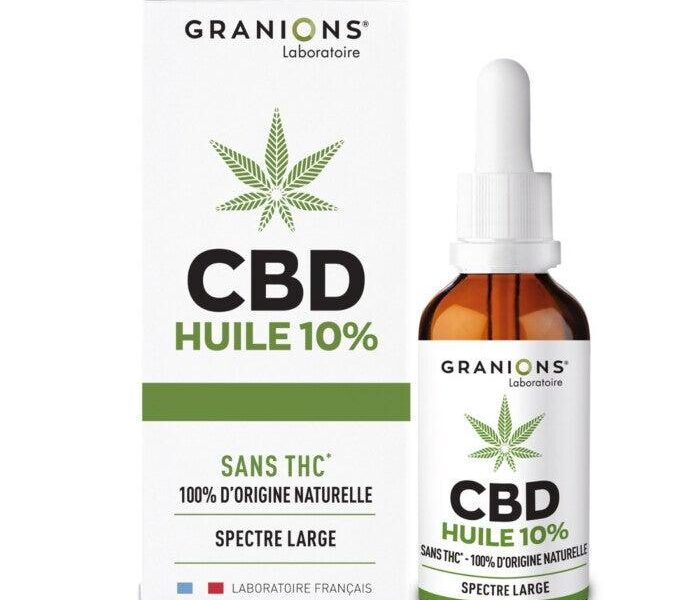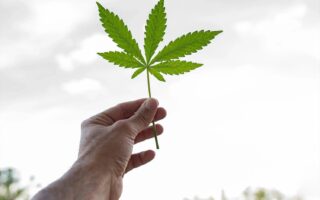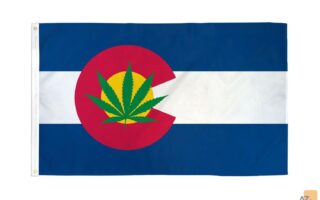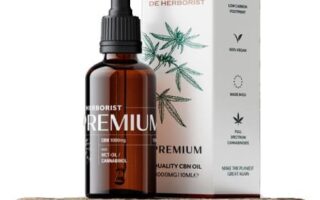Introduction:
In the ever-evolving landscape of wellness and alternative medicine, few terms have surged to prominence quite like CBD. Once a niche topic in the realm of cannabis, this compound has now found its way into products ranging from oils and edibles to skincare and wellness supplements. However, amid the buzz surrounding its potential benefits, a fundamental question often arises: Is CBD itself a cannabinoid? This inquiry takes us into the intricate world of cannabinoids, the chemical compounds produced by the cannabis plant, and offers a gateway to understanding not only CBD’s role within this family but also its effects, uses, and the science that underlies our growing fascination with it. Join us as we unravel the complexities of CBD and explore its status as a cannabinoid in a rich tapestry of plant chemistry and human experience.
Table of Contents
- Understanding Cannabinoids and Their Role in Cannabis
- The Unique Properties of CBD in the Cannabinoid Family
- Exploring the Benefits and Uses of CBD
- Navigating the Legal Landscape and Quality Considerations for CBD Products
- Q&A
- To Conclude
Understanding Cannabinoids and Their Role in Cannabis
Cannabinoids are naturally occurring compounds found within the cannabis plant that interact with the human endocannabinoid system, which plays a crucial role in regulating various physiological processes. These compounds can be broadly classified into two categories: phytocannabinoids, which are derived from the cannabis plant, and endocannabinoids, which are produced by the human body. Alongside their therapeutic potential, cannabinoids are believed to possess unique effects that can vary widely based on their specific chemical structures and how they interact with cannabinoid receptors in our bodies. Some well-known cannabinoids include tetrahydrocannabinol (THC), which is responsible for the psychoactive effects of cannabis, and cannabidiol (CBD), which is celebrated for its potential health benefits without the euphoric high.
The role of cannabinoids extends beyond recreational use; they are increasingly recognized in medicinal contexts. The potential therapeutic applications made possible by cannabinoids can include but are not limited to:
- Anti-inflammatory properties
- Neuroprotective effects
- Anxiety and stress reduction
- Pain relief
- Appetite stimulation
When considering cannabis products, it’s essential to understand the different cannabinoids present, as each can influence the experience and therapeutic effects. Below is a simple comparison table to highlight some key cannabinoids and their primary effects:
| Cannabinoid | Primary Effects |
|---|---|
| THC | Potent psychoactive effects, euphoria |
| CBD | No psychoactive effects, potential anti-anxiety |
| CBN | May promote sleep, mild psychoactive |
| CBG | Potential antibacterial, anti-inflammatory |
The Unique Properties of CBD in the Cannabinoid Family
One of the standout qualities of CBD, or cannabidiol, in the vast cannabinoid family is its intricate relationship with the endocannabinoid system (ECS) in the human body. Unlike THC (tetrahydrocannabinol), which is well-known for its psychoactive effects, CBD interacts with cannabinoid receptors in a more subtle yet effective manner. This interaction is believed to promote a sense of balance and well-being without inducing the “high” that many associate with cannabis. Some of the key attributes of CBD include:
- Anti-inflammatory properties: CBD has shown potential in reducing inflammation, making it a popular choice for individuals suffering from chronic pain.
- Anxiety relief: Research suggests that CBD may help alleviate anxiety symptoms, providing a natural alternative to pharmaceuticals.
- Neuroprotective effects: CBD is being studied for its potential role in protecting brain health and function, particularly in the context of neurodegenerative diseases.
Also noteworthy is CBD’s versatility; it can be found in various forms, including oils, tinctures, edibles, and topical applications. This range allows consumers to choose products that best fit their lifestyle and preferences. Moreover, CBD boasts an excellent safety profile, with minimal side effects reported by users, making it accessible to a broader audience. A quick comparison of cannabinoids highlights CBD’s distinctive advantages:
| Cannabinoid | Psychoactive | Primary Benefits |
|---|---|---|
| CBD | No | Anti-inflammatory, Anxiety relief, Neuroprotection |
| THC | Yes | Pain relief, Appetite stimulation, Euphoria |
| CBC | No | Anti-inflammatory, Potential antidepressant |
Exploring the Benefits and Uses of CBD
CBD, or cannabidiol, has garnered immense attention in recent years, primarily due to its potential therapeutic benefits. Among its numerous uses, many people are exploring how it can aid in managing various health conditions. Some of the most commonly reported advantages include:
- Anxiety Reduction: Studies suggest that CBD may help alleviate symptoms of anxiety and promote relaxation.
- Pain Relief: Users often turn to CBD for its potential anti-inflammatory properties, which may assist in managing chronic pain.
- Improved Sleep Quality: Many individuals report better sleep patterns and reduced insomnia, thanks to CBD’s calming effects.
In addition to these benefits, CBD is versatile in its application, making it suitable for different preferences and lifestyles. From oils and tinctures to edibles and topical creams, there is a myriad of ways to incorporate CBD into daily routines. Here’s a brief overview of some common forms:
| Form | Description |
|---|---|
| Oils & Tinctures | Concentrated drops for sublingual use, allowing for fast absorption. |
| Edibles | CBD-infused food items like gummies or chocolates for a tasty option. |
| Topicals | Creams and balms for localized relief, ideal for inflamed areas. |
Navigating the Legal Landscape and Quality Considerations for CBD Products
The legal landscape surrounding CBD products can often feel like navigating a maze, given the varying regulations across states and countries. While some jurisdictions have embraced the legality of cannabidiol derived from hemp, others remain cautious or outright prohibitive. It’s crucial for consumers and businesses to stay informed about the specific laws governing CBD in their area, which may include:
- Source of CBD: Ensure the CBD is sourced from hemp which is federally legal in the U.S.
- THC Levels: Products must typically contain less than 0.3% THC to comply with federal law.
- Labeling Requirements: Accurate labeling that clearly states the CBD content and other ingredients is often mandated.
- Testing Standards: Third-party lab testing can provide verification of product quality and safety.
Beyond the legalities, quality considerations are paramount when choosing CBD products. Not all CBD is created equal, and understanding how to identify high-quality options is essential. Important factors to look for include:
- Extraction Method: CO2 extraction is known for preserving cannabinoids without harmful solvents.
- Full-Spectrum vs. Isolate: Full-spectrum products contain a wider range of cannabinoids, which can enhance effectiveness.
- Transparency: Brands that offer easy access to lab results and ingredient sourcing demonstrate better trustworthiness.
- Customer Reviews: Feedback from other users provides insight into effectiveness and user experience.
Q&A
Q&A: Is CBD a Cannabinoid? Unraveling the Mystery
Q1: What exactly is CBD?
A1: CBD, or cannabidiol, is a compound found naturally in the cannabis plant. It’s one of over a hundred cannabinoids, which are chemical compounds that interact with the body’s endocannabinoid system.
Q2: So, is CBD a cannabinoid?
A2: Yes, indeed! CBD is classified as a cannabinoid due to its unique properties and the way it binds to cannabinoid receptors within our body. Specifically, it primarily interacts with the CB1 and CB2 receptors, influencing various physiological functions.
Q3: Are all cannabinoids the same?
A3: No, not at all! While all cannabinoids share the common feature of interacting with the endocannabinoid system, they have different structures and effects. For example, THC (tetrahydrocannabinol), another well-known cannabinoid, is psychoactive, while CBD is not.
Q4: How does CBD differ from THC?
A4: Both are cannabinoids derived from the cannabis plant, but their effects are quite different. THC is responsible for the ”high” associated with marijuana, whereas CBD is often valued for its potential therapeutic benefits without the intoxicating effects. This makes CBD appealing for those seeking relief without altering their state of consciousness.
Q5: What are other cannabinoids besides CBD and THC?
A5: There are many other cannabinoids including CBG (cannabigerol), CBN (cannabinol), and more! Each has its own unique properties and potential benefits, contributing to the diverse therapeutic landscape of the cannabis plant.
Q6: Is CBD legal everywhere?
A6: The legal status of CBD varies by country and region. In many places, CBD derived from industrial hemp with low THC levels is legal, but regulations can differ. Always check local laws to ensure compliance.
Q7: What potential benefits does CBD offer?
A7: Research suggests that CBD may provide a range of benefits, including reducing anxiety, alleviating chronic pain, and improving sleep quality. However, more research is still needed to fully understand its effects and efficacy.
Q8: How can you incorporate CBD into your routine?
A8: CBD is available in various forms, including oils, capsules, edibles, and topicals. It’s important to start with a low dose and consult with a healthcare professional, especially if you’re taking other medications.
Q9: Can everyone use CBD?
A9: While many people can benefit from CBD, it’s essential for individuals, particularly those with existing health conditions or those who are pregnant or breastfeeding, to seek medical advice before starting any new supplement.
Q10: What should I remember about CBD and its classification as a cannabinoid?
A10: Remember, CBD is just one player in the vast cannabinoid family. Understanding its properties and how it fits within the broader spectrum of cannabinoids can help you make informed choices about its use and potential benefits.
In Conclusion:
Yes, CBD is a cannabinoid that holds a unique position within the cannabis family, offering potential benefits without the high. As research continues to unfold, we gain a clearer understanding of this fascinating compound and its many possibilities.
To Conclude
the exploration of CBD reveals its definitive status as a cannabinoid, nestled within the complex web of the Cannabis sativa plant’s vast array of chemical compounds. As our understanding of cannabinoids evolves, so too does the conversation surrounding CBD’s therapeutic potential and its distinction from its more famous counterpart, THC. Whether one approaches CBD with skepticism or curiosity, the science behind it continues to unfold, inviting further inquiry and discovery. As we stand on the precipice of new research and societal acceptance, it becomes increasingly vital to remain informed and open-minded about the possibilities that cannabinoids like CBD may hold for our health and well-being. So, as we venture forward in the world of hemp and its numerous offerings, remember that knowledge is our greatest tool in navigating this fascinating journey.



